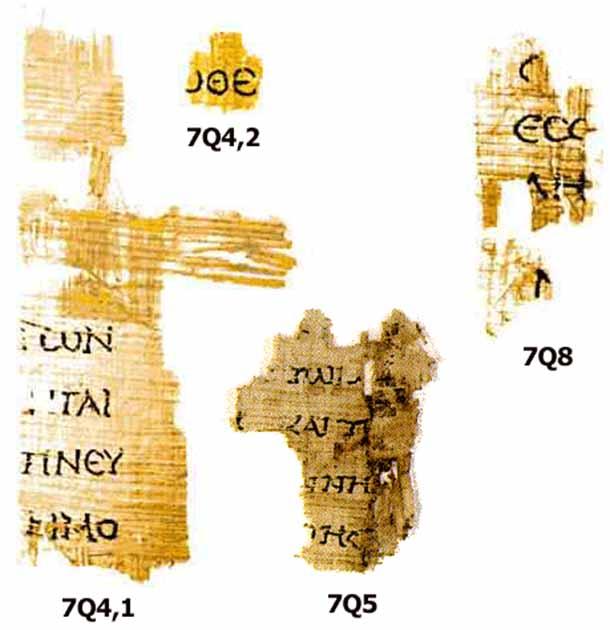
How The Sons Of God Became The Sethian Nephilim
According to the biblical story told in the Book of Genesis, Chapter 6:1-4, certain Sons of God fathered children with the daughters of men. They were called the Nephilim and are often identified with Giants. One of the fascinating aspects of the story of the Nephilim is the way in which they were presented in later post-Exilic Hebrew literature. The story as it appears in The Book of the Watchers, later incorporated in the first Book of Enoch, tells about the so-called Watchers or Fallen Angels. The Book of the Watchers was considered to have been a very important work within the Hasidim community associated with the Dead Sea Scrolls found at Qumran. The term, “Sons of Seth”, is found in three literary works amongst the Dead Sea Scrolls, and play an important role in the story. In the time of Jesus and most likely some time before that, the Sons of Seth became identified with the Nephilim.

Dead Sea Scroll fragments 7Q4, 7Q5 and 7Q8, including a Greek copy of a scroll of Enoch from Cave 7 in Qumran, written on papyrus (Public Domain)
The Watchers in the Jewish Enochite Tradition
The Book of the Watchers is the most significant source from Jewish tradition at current disposal about the Nephilim. One ancient manuscript of the book found among the Dead Sea Scrolls is dated on palaeographical grounds to the early second century BC. The book was produced at least as early as 200 BC but it could be much older. The story of the Watchers told in Chapters 6-19 belongs to an even older part of the Enochite tradition.
In The Book of the Watchers, the story of the “Sons of God” who had children with the daughters of men, found in the Book of Genesis, is much elaborated on. As the biblical portrayal of the Nephilim finds a clear and definite forerunner or prototype in the great Sumerian hero Gilgamesh, it comes as no surprise that Gilgamesh appears as one of the Giants in the Book of Giants, another book expanding on the story told in the Book of Genesis as well as the first Book of Enoch and of which various badly disintegrated and broken up Aramaic fragments were found amongst the Dead Sea Scrolls. Gilgamesh is mentioned together with Hobabish, probably Humbaba, and other Giants.
Like this Preview and want to read on? You can! JOIN US THERE ( with easy, instant access ) and see what you’re missing!! All Premium articles are available in full, with immediate access.
For the price of a cup of coffee, you get this and all the other great benefits at Ancient Origins Premium. And - each time you support AO Premium, you support independent thought and writing.
Dr Willem McLoud is an independent South African scholar whose main interests are ancient Middle Eastern studies, Kantian philosophy and philosophy of science. Willem’s main areas of study regarding the ancient Middle East are the Sumerian, Akkadian and early Egyptian civilizations, with special focus on the Uruk and Akkadian Periods in Mesopotamian history as well as the Old Kingdom Period in Egyptian history. He is the author of The Nephilim: Kings of an Epic Age: Secrets and Enigmas of the Sumerians and Akkadians and The Nephilim: An Unholy Brood: Secrets and Enigmas of an Ancient Mediterranean Race
Top Image: Norandino and Lucina Discovered by the Ogre’ (1624) by Giovanni Lanfranco. Galleria Borghese (Public Domain)
By: Dr Willem McLoud














